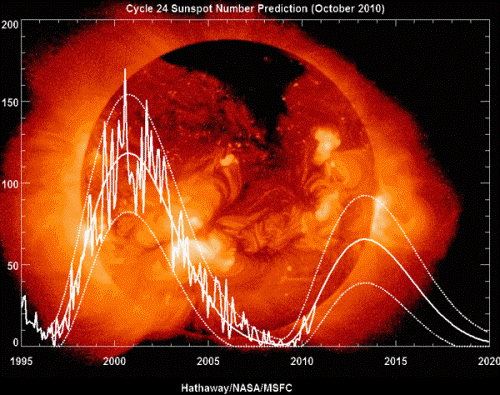 Sometimes old knowledge makes for “new” news, even viral news. Case in point:sky-watchers have known for more than two millennia that the Earth has a irregular wobble in its orbit — what’s known as precession — which over time makes its orientation to the constellations, and to our sun, change.
Sometimes old knowledge makes for “new” news, even viral news. Case in point:sky-watchers have known for more than two millennia that the Earth has a irregular wobble in its orbit — what’s known as precession — which over time makes its orientation to the constellations, and to our sun, change.
This precessional change means that, at certain times of year, when the sun would start to “rise” in, say, Capricorn just following the Winter Solstice, it now rises in Sagittarius.
Now, finally, former Scorpios can safely date Pisces (who are now Aquarians), or whomever.
The zodiac system of astrological markers is believed to have been created by the ancient Chaldeans and reflects a time when the Earth’s precession (the sun’s apparent “rising” in a certain part of the sky) was what we now typically know as the progression of Zodiacal signs.
But, with the passing of thousands of years, things no longer line up as well as they used to.
This fact has been noted by many others (including Carl Sagan in Cosmos) and is fairly common knowledge passed on in most astronomy classes. That’s why Parke Kunkle, professor of astronomy at Minneapolis Community and Technical College, was so surprised to receive scores of calls (one caller demanding that he “give me my sign back!”) following a recent broadcast interview. The interview got picked up and went viral — causing a big splash on Facebook — and put the modest professor at the center of an “Interweb” hullabaloo.
Some folks apparently take their signs seriously; one’s Zodiacal sign can become central to one’s identity, giving the individual a special connection to the “starry dynamo”, the vast cosmos that engulfs us. Many greeted the news with ambivalence. Most will probably get over it and simply continue self-identifying with their traditional birth sign.
But no need to worry, assuming that we don’t get hit by a meteorite or comet, things will return to roughly normal in 26,000 years…give or take a millennium.
So, what’s up with the Wobble?

As the Earth orbits the sun, spinning about its axis, it also moves through other quasi-periodic variations. These evolving cycles of change, also referred to as Milankovic cycles*, are three-fold:
1) axial tilt (obliquity – the degree that the Earth tilts toward or away form the sun),
2) orbital shape (eccentricity – the Earth’s orbit around the sun is an ellipsis, not a circle, hence not exactly uniform),
3) axial wobble (precession – the trend in the direction of the Earth’s axis of rotation relative to the fixed stars).
This latter variation — acting like a gigantic spinning and wobbling top — is responsible, over long term, for the changes in the “rising sun” position against the constellatory backdrop.
There is also an additional type of precession that occurs in the Earth’s orbit about the sun; over thousands of years, the ellipsoidal shape of the Earth-Sun orbit also rotates (known as apsidal precession; see below, article continues).
 Astronomers will point out that there are many, many actual “constellations”, and that the ones imagined and configured as special by the ancient sages were fairly arbitrary, having more to do with marking the seasonal changes here on Earth, with the names and shapes of familiar animals or mythic heroes/demi-gods.
Astronomers will point out that there are many, many actual “constellations”, and that the ones imagined and configured as special by the ancient sages were fairly arbitrary, having more to do with marking the seasonal changes here on Earth, with the names and shapes of familiar animals or mythic heroes/demi-gods.
Some astronomers, no doubt enjoying throwing a little chaos into the astrological soup, will point out a 13th constellation, Ophiucus, the serpent bearer, that our sun also “rises through” before repeating its ancient, astronomical routine.

Their relationship to human personalities (as causal forces) is also challenged by scientists, but there may be a naturalistic explanation here; the alignment of our sun with the constellations may reflect, on some level, the different types of personality that develop at different points in the year due to variations in the amount of sunlight (experienced by the pregnant mother first, then the newborn infant), which impacts hormonal secretions in the brain (such as from the pineal gland) and body.
* These Milankovic cycles, individually and cumulatively, are believed to impact the Earth’s long-term climate,by subtly altering the heat budget of our planet (via insolation changes and solar forcing impacts), hence, they may also impact the global warming. But to what extent is a matter of much debate and speculation. As for an opposite climate effect — the so-called “white Earth” scenario (i.e., a new Ice Age) — only one cycle, precession, currently favors glaciation.
Top Image – Wheel of the zodiac: This 6th century mosaic pavement in a synagogue incorporates Greek-Byzantine elements, Beit Alpha, Israel
Precession (apsidal) diagram – GregBenson 18:57, 1 October 2005 (UTC);
CC – by – sa 3.0

